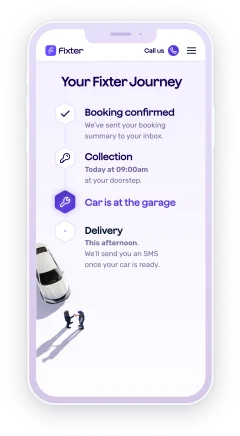Common Honda Civic Issues and How to Fix Them
The Honda Civic and other honda models, a staple on British roads, are known for their reliability and fuel efficiency. Yet, like any vehicle, it can face its fair share of issues over time. From engine troubles to brake problems, these common faults can cause frustration for owners. In this blog post, we will take a closer look at these typical problems, which include common problems with honda civic, and offer practical advice on how to resolve them. and offer practical advice on how to resolve them. Whether you’re a seasoned motorist or new to car maintenance, this guide will help you keep your Civic running smoothly.

Engine Performance Problems
The engine is the heart of your Honda Civic and other civic models . Performance issues can seriously affect the vehicle's reliability and efficiency. Let’s explore common engine problems and how to address them effectively.
Diagnosing Engine Misfires
An engine misfire can be identified by a jerking sensation or a noticeable loss of power. Misfires occur when one or more of the engine's cylinders, such as those with glow plugs, fail to ignite the fuel-air mixture properly.
Begin by checking the spark plugs and ignition coils, as they are often the culprits.
Inspect the fuel injectors for blockages or leaks.
Assess the engine’s compression using a compression tester.
If you notice persistent misfires, consider visiting a professional mechanic. Ignoring misfires can lead to severe engine damage over time. Regular maintenance is key to preventing these issues.
Fixing Oil Leaks
Oil leaks are a common issue that can lead to engine damage if not addressed. Start by identifying the leak's location. Look under the car for oil spots or inspect the engine bay for oily residues.
Common sources include the oil pan gasket, valve cover gasket, and oil filter.
Replace worn-out gaskets or seals promptly.
Ensure the oil filter is tightly secured.
Regular oil changes can help prevent leaks. Monitoring oil levels frequently will also alert you to potential problems early on.
Addressing Engine Overheating
Engine overheating can cause extensive damage if not managed promptly. Overheating is often due to a failed cooling system component.
Check the coolant level and refill if necessary.
Inspect the radiator for blockages or damage.
Examine the thermostat and water pump for faults.
Consider professional help if the problem persists. Preventive maintenance, like regular coolant checks, can help avoid overheating.
Transmission Troubles
Transmission issues can affect your driving experience. Recognising symptoms early can save you from costly repairs. Here’s how to manage these problems efficiently.
Identifying Gear Slippage
Gear slippage occurs when the transmission unexpectedly shifts gears. This can be dangerous and indicates a problem with the transmission system.
Check the transmission fluid level and quality. Low or dirty fluid can cause slippage.
Inspect for worn or damaged clutch plates.
Listen for strange noises while shifting gears.
Regular transmission fluid changes can help prevent slippage. If the problem continues, consult a transmission specialist.
Resolving Clutch Issues
Clutch problems can make shifting gears difficult. A worn clutch may cause a burning smell or difficulty in engaging gears.
Check for clutch pedal resistance. A soft or spongy pedal indicates air in the hydraulic system.
Inspect the clutch disc and pressure plate for wear.
Test the clutch cable for proper tension.
If DIY fixes don’t work, professional repair is recommended. Regular checks can prolong clutch life.
Maintaining the Transmission System
Proper maintenance of the transmission system ensures smooth operation. Here are some steps to keep it in top condition:
Change the transmission fluid as per the manufacturer’s recommendations.
Inspect the transmission for leaks regularly.
Ensure that the transmission is not overheating by checking the cooling system.
Regular maintenance can prevent many transmission issues. It also extends the life of the transmission system.
Electrical System Faults
Electrical issues can be daunting, but they’re often straightforward to fix. Understanding common problems can help you troubleshoot them effectively.
Troubleshooting Battery Drains
Battery drains can leave you stranded unexpectedly. Battery issues might stem from various sources.
Check for lights left on or accessories that drain power.
Inspect the alternator for proper charging.
Test the battery voltage with a multimeter.
Regular battery maintenance and ensuring all electrical components are off when not in use can prevent unnecessary drains.
Fixing Faulty Wiring
If you suspect faulty wiring, consulting a honda dealer can help resolve issues, as it can cause a host of electrical problems, from dim lights to failed sensors.
Inspect the wiring harness for visible damage.
Use a multimeter to test for continuity in suspect circuits.
Repair or replace damaged wires as necessary.
Ensuring tight, clean connections can prevent many wiring problems. Professional help may be necessary for complex issues.
Replacing Malfunctioning Sensors
Failed sensors, along with issues like battery electrolyte leakage, can lead to erratic performance and poor fuel economy. Commonly affected sensors include the oxygen sensor and mass airflow sensor, alongside potential issues with the fuel pump .
Use an OBD-II scanner to identify faulty sensors.
Replace malfunctioning sensors with the correct parts.
Reset the car’s ECU after sensor replacement to clear error codes.
Regular sensor checks can prevent many performance issues and improve vehicle efficiency.
Suspension and Steering Concerns
The suspension and steering systems are crucial for a smooth ride and precise handling. Identifying and fixing problems early can prevent further damage.
Detecting Suspension Noise
Unusual noises from the suspension can indicate worn components. Noises like clunks or squeaks should be investigated promptly.
Inspect shock absorbers and struts for leaks or damage.
Check for worn-out bushings or ball joints.
Ensure all suspension components are tightly secured.
Prompt replacement of worn parts can prevent costly repairs. Regular inspections maintain ride comfort and safety.
Fixing Uneven Tyre Wear
Uneven tyre wear can be a sign of alignment issues or suspension problems.
Inspect tyre tread for unusual patterns.
Check wheel alignment and adjust if necessary.
Inspect suspension components for wear.
Regular tyre rotations and alignment checks can prevent uneven wear and extend tyre lifespan.
Addressing Steering Wheel Vibrations
Steering wheel vibrations can be unsettling and indicate alignment or balance issues.
Check for tyre balance by observing if vibrations occur at certain speeds.
Inspect the alignment if the car pulls to one side.
Examine the wheel bearings and suspension components for wear.
Routine maintenance can prevent steering issues. If vibrations persist, seek professional alignment services.
Brake System Challenges
Brakes are essential for safety. Addressing brake system issues promptly, including the anti lock braking system, ensures your safety on the road. Here’s how to manage common brake problems.
Recognising Brake Squeals
Brake squeals can be annoying and indicate worn brake pads. Squeals are often caused by metal wear indicators.
Inspect brake pads for wear and replace if necessary.
Ensure the rotor surface is smooth and free from grooves.
Check the callipers for proper function.
Regular brake inspections can prevent wear and extend the life of the braking system.
Repairing Brake Fluid Leaks
Brake fluid leaks can compromise braking performance. Identifying and fixing leaks is crucial for safety.
Inspect brake lines and hoses for visible leaks.
Check the master cylinder for signs of a leak.
Refill the brake fluid and bleed the system if needed.
Regular checks and prompt repairs maintain braking efficiency. Always use the recommended brake fluid type.
Ensuring Brake System Efficiency
Ensuring your brake system is efficient, which is part of what makes a honda civic reliable, involves regular maintenance and checks.
Change brake fluid periodically as per the service manual.
Inspect brake pads and rotors regularly for wear.
Test the brake pedal for firmness.
Consistent maintenance ensures reliable braking performance. It also enhances safety and prevents unexpected failures.








